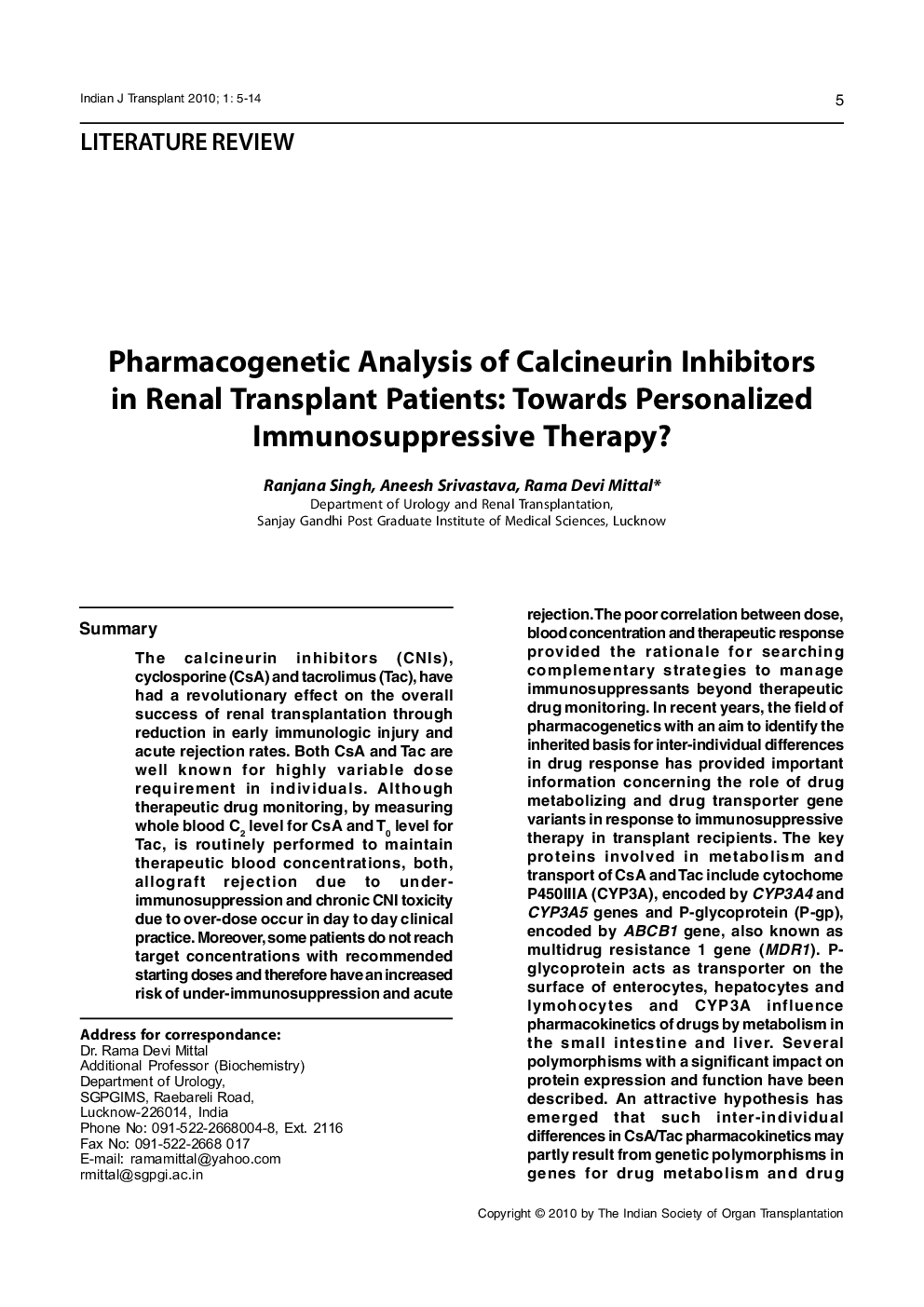| کد مقاله | کد نشریه | سال انتشار | مقاله انگلیسی | نسخه تمام متن |
|---|---|---|---|---|
| 3338177 | 1591078 | 2010 | 10 صفحه PDF | دانلود رایگان |

SummaryThe calcineurin inhibitors (CNIs), cyclosporine (CsA) and tacrolimus (Tac), have had a revolutionary effect on the overall success of renal transplantation through reduction in early immunologic injury and acute rejection rates. Both CsA and Tac are well known for highly variable dose requirement in individuals. Although therapeutic drug monitoring, by measuring whole blood C2 level for CsA and T0 level for Tac, is routinely performed to maintain therapeutic blood concentrations, both, allograft rejection due to under-immunosuppression and chronic CNI toxicity due to over-dose occur in day to day clinical practice. Moreover, some patients do not reach target concentrations with recommended starting doses and therefore have an increased risk of under-immunosuppression and acute rejection. The poor correlation between dose, blood concentration and therapeutic response provided the rationale for searching complementary strategies to manage immunosuppressants beyond therapeutic drug monitoring. In recent years, the field of pharmacogenetics with an aim to identify the inherited basis for inter-individual differences in drug response has provided important information concerning the role of drug metabolizing and drug transporter gene variants in response to immunosuppressive therapy in transplant recipients. The key proteins involved in metabolism and transport of CsA and Tac include cytochome P450IIIA (CYP3A), encoded by CYP3A4 and CYP3A5 genes and P-glycoprotein (P-gp), encoded by ABCB1 gene, also known as multidrug resistance 1 gene (MDR1). P-glycoprotein acts as transporter on the surface of enterocytes, hepatocytes and lymohocytes and CYP3A influence pharmacokinetics of drugs by metabolism in the small intestine and liver. Several polymorphisms with a significant impact on protein expression and function have been described. An attractive hypothesis has emerged that such inter-individual differences in CsA/Tac pharmacokinetics may partly result from genetic polymorphisms in genes for drug metabolism and drug transport. The present review therefore, highlights the importance of performing pharmacogenetic analysis of CNIs in renal transplant recipients, taking into account different studies conducted till date, with the ultimate aim of personalized immunosuppressive therapy.
Journal: Indian Journal of Transplantation - Volume 4, 2010, Pages 5-14